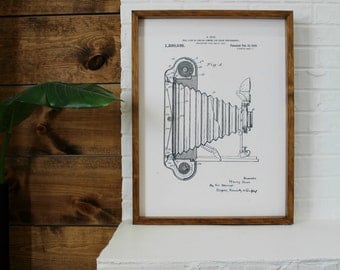
With the camera set at 36 inches adjust the lower adjustment for.The camera on a target at infinity and adjust the upper screw for Two adjustments until there is no further change. Check in middle distances for coincidence.Check the lateral adjustment at infinity before doing the rest of the.The procedure automatically adjusts the rangefinder for the focal lengthīrought to you by Speed Graphic FAQ.To a generation that has grown up with autofocus lenses and digital LCD screens it may be hard to imagine, but from the birth of photography right up to the 1960s it was very common to own a camera that totally lacked any mechanism to confirm accurate focus. These cameras that featured neither rangefinders nor focusing screens were known as scale focus or zone focus cameras, or viewfinder cameras. The user would set the distance to subject on the lens barrel and hope for the best.Įven with this limitation taken into account, there were some incredibly good scale focus cameras produced in the mid-20th century. The Olympus Trip 35, for example, was one of the best-selling cameras of all time, selling more than ten million copies worldwide over a fifteen year period of production. But that doesn’t change the fact that it (and countless other viewfinder and zone focus cameras) isn’t as accurate as a rangefinder camera or SLR.Įnter human ingenuity and the drive for improvement.

For as long as photography has existed there have been accessory companies producing gadgets that solve problems and make life easier. It was quickly realized that adding a separate rangefinder mechanism to a zone focus camera amounted to an affordable and impactful improvement to these hard-to-focus but otherwise excellent machines. There were dozens of auxiliary rangefinders produced from the 1930s, up to the Fotoman which is produced today in China, however the level of quality and features of these numerous rangefinders vary dramatically. The top-quality versions are the Leitz Fokos, Kodak Service Rangefinder, Kodak Pocket Rangefinder, Brownie Measure-Rite, AMF, Saymon Brown and the unusual Kuhn Flexameter. Apparently I'm VERY slow when typing.Some common models are the BLIK by Lomo, Hugo Meyer Pocket Range Finder, Walz, Widor, Ideal, Certo Certus, Medis, Pollux, Rowi, Prazisa and Gallus to name quite a few. (The above message was posted while I was composing my message. That means they're designed to be read by someone behind the lens, which should indicate a lens designed to be used on a camera. The f-stop numbers in the picture face the rear of the lens. This means the bottom of the f-stop numbers face the front of an enlarger lens.


Enlarger lenses are designed so that the f-stop numbers can be read in this position. When used in an enlarger the lens faces downward.
Hugo meyer pocket rangefinder full#
The crop factor for your camera is 1.5x? That makes this 15cm lens have same field of view as 15cm * 1.5 = 22.5cm lens would give on full frame camera. Since lens is mounted on bellows could be a macro lens or perhaps an adapted enlarger lens. How big is the image circle? How big a format will it cover? Visualopsins wrote: The crop factor for your camera is 1.5x? That makes this 15cm lens have same field of view as 15cm * 1.5 = 22.5cm lens would give on full frame camera.įormat can be guessed using image circle size as a guide. Nikon: Nikon Micro-NIKKOR-P-C Auto 1:3.5 f=55mm, Nikon NIKKOR-P Auto 105mm f/2.5 Pre-AI (Sonnar), Nikon Micro-NIKKOR 105mm 1:4 AI, Nikon NIKKOR AI-S 35-135mm f/3,5-4,5 Pentax K-Mount: SMC PENTAX ZOOM 1:3.5 35~105mm, SMC PENTAX ZOOM 1:4 45~125mm Visualopsins wrote: Depends on aps-c sensor size.


 0 kommentar(er)
0 kommentar(er)
